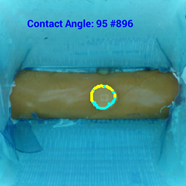How to Bond PTFE to Anything
Featured Product from Brighton Science

Polytetrafluoroethylene or PTFE is a very common material in wide use among almost every major industry. This ultra-lubricious and multi-use fluoropolymer touches everyone from aerospace and automotive industries (as an insulating cover on cabling) to musical instrument maintenance (it’s found in the valve oil brass and woodwind instruments for use on their moving parts). Probably its most famous iteration is under the branded name Teflon and is used as a non-stick surface on pots and pans. PTFE can be formed into molded parts; used as flexible pipe joints, valve bodies, electrical insulators, bearings, gears; and extruded as tubing.
The extreme chemical resistance and chemical inertness, as well as the lightweight yet strong properties of PTFE make it highly advantageous in the manufacturing and use of medical devices. Because of its extraordinarily low coefficient of friction (which is a mathematical way of saying that the surface is remarkably slippery) PTFE tubing can be used to transfer harsh chemicals or medical tools whose purity needs to be maintained and need safe passage into the body during surgery. PTFE tubing is so lubricious, resilient and thin that it is perfect for a guiding catheter ID (inside diameter) where tools like stents, balloons, atherectomy or angioplasty devices need to slide through freely without the threat of snags or obstruction. Because nothing sticks to this stuff, it can also interfere with the ability of bacteria and other infectious agents to adhere to tubing and cause hospital-acquired infections.
All of these incredible attributes of PTFE means that it is almost always being bonded to something else. If it is being used as a coating, as a sealing gasket or tubing with Pebax jackets and plastic connective ferrules, it is very likely it needs to adhere to another material. You might have noticed what we already said: nothing sticks to PTFE.
The properties that make this material so appealing to medical device companies, also tend to create manufacturing challenges during product development and into production. Getting coatings, elastomers, and other device components to adhere to PTFE is incredibly challenging and requires strict process controls.
So, how do manufacturers make this widely used, unbondable material bondable? And how do they know it has been treated or prepared properly and is actually ready to bond or coat?











